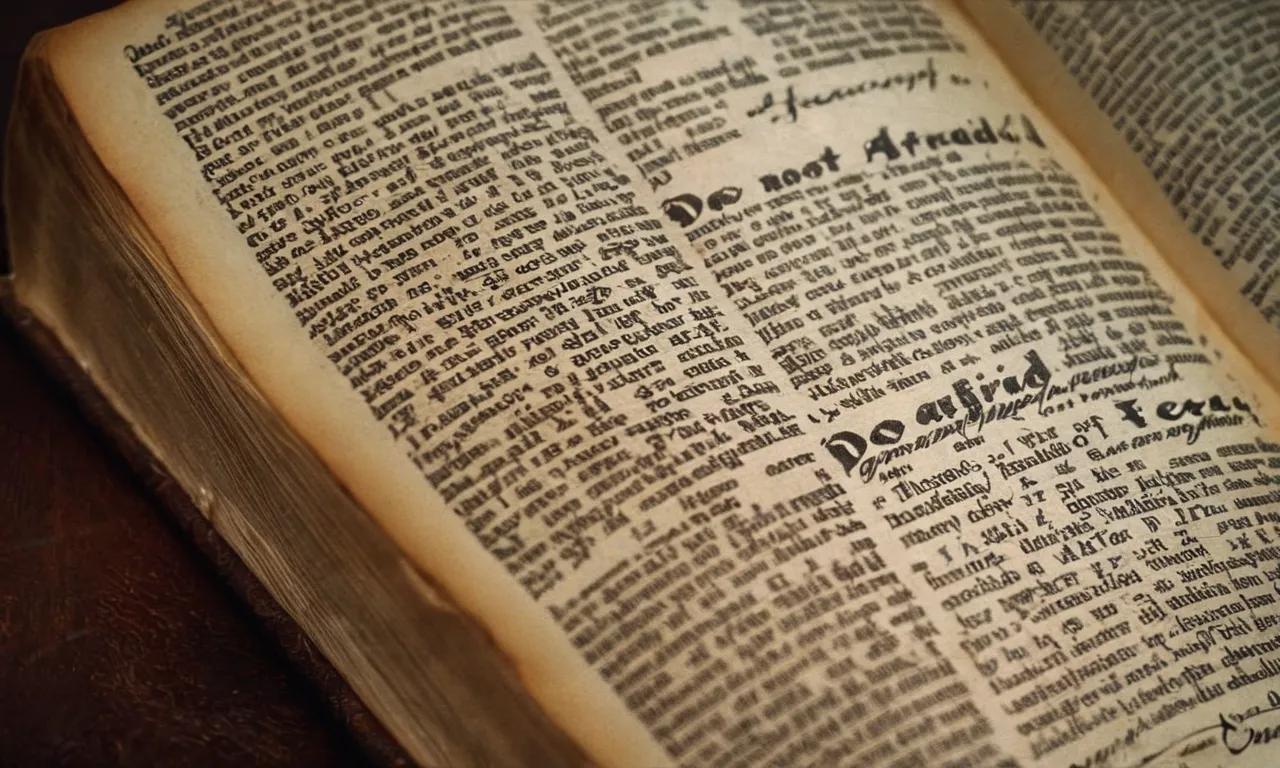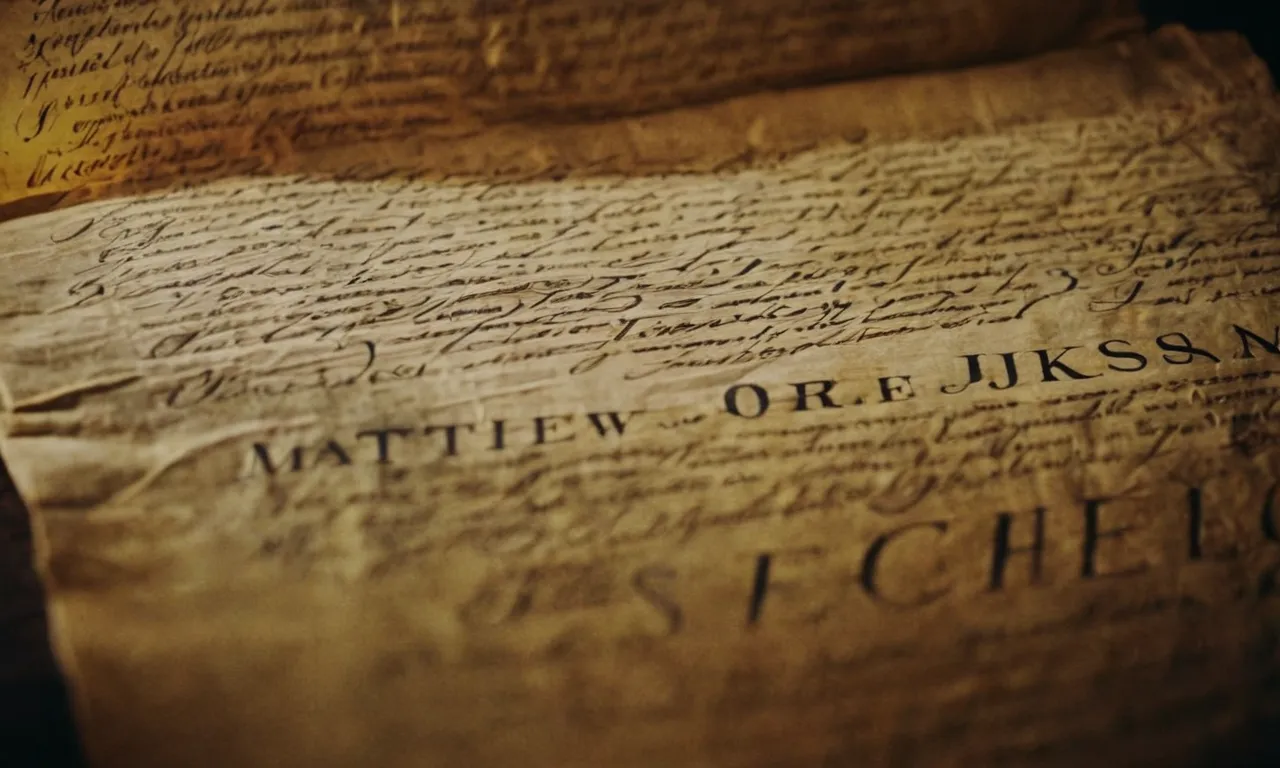Which Gospel Writers Were Eyewitnesses Of Jesus?
The question of which gospel writers personally witnessed the life and ministry of Jesus is an important one for understanding the origins and reliability of the four New Testament gospels. If you’re short on time, here’s a quick answer:
However, the non-eyewitness authors may have had access to eyewitness testimony.
In this comprehensive article, we will examine in detail the evidence regarding the authorship of each gospel and what role, if any, eyewitness testimony played in their composition.
We will look at both internal evidence from the texts themselves and external historical evidence regarding their origins.
By evaluating each gospel closely, we can reach well-supported conclusions on whether or not Matthew, Mark, Luke, and John wrote accounts based on their own experience of Jesus’ ministry or based on gathering testimony from his earliest followers.
The Gospel of John – Written by an Eyewitness
Evidence That the Apostle John Was the Author
There is strong evidence that the apostle John, one of Jesus’ 12 disciples, authored the gospel of John. Internal evidence from the text itself indicates that the author was an eyewitness of Jesus’ ministry.
The writer refers to himself several times as the “disciple whom Jesus loved” (John 13:23; 19:26; 20:2; 21:7,20).
This disciple is described as reclining next to Jesus at the Last Supper (John 13:23), being present at the crucifixion (John 19:26-27), and being one of the first witnesses of the empty tomb (John 20:2-9).
These details indicate that the author was part of Jesus’ inner circle of disciples. Early church history and writings unanimously attribute this gospel to the apostle John.
John’s Firsthand Knowledge of Jesus’ Ministry
As one of Jesus’ 12 disciples, John would have accompanied Jesus throughout his 3-year ministry, hearing his teachings and observing his miracles firsthand.
John provides eyewitness details not found in the other gospels – he notes the days and locations where events took place (John 1:29, 35, 43; 2:1; 4:43; 6:22).
His gospel includes lengthy passages of Jesus’ teachings not found elsewhere – such as his Bread of Life discourse (John 6:22-71), his Farewell Discourse (John 13-17), and his private conversation with Nicodemus (John 3:1-21).
John’s vivid recollection of Jesus’ ministry shows he had direct knowledge of what transpired.
John’s Role in Key Events During Jesus’ Ministry
John had a particularly close relationship with Jesus and was present at pivotal events in his ministry. He and his brother James were two of Jesus’ first disciples (John 1:35-42).
John witnessed Jesus’ first miracle of turning water into wine at the wedding in Cana (John 2:1-11).
John was likely one of the two unnamed disciples with Andrew who first met Jesus and declared Jesus the Messiah after spending a day with him (John 1:35-42).
Along with Peter and James, John was selected to witness Jesus’ transfiguration on the mountaintop (Matthew 17:1).
And John was likely the “other disciple” who gained access for Peter to the high priest’s courtyard after Jesus’ arrest (John 18:15-16). John’s inclusion in these intimate events shows his importance among the 12 disciples.
The Synoptic Gospels – Based on Eyewitness Accounts
The Tradition of Mark’s Gospel Coming from Peter
The Gospel of Mark is commonly seen by scholars as recording the eyewitness testimony of Simon Peter. There is early evidence that Mark traveled with Peter and recorded his firsthand experiences with Jesus (Papias, quoted by Eusebius).
Details like the name of the high priest’s servant (Malchus) who had his ear cut off by Peter indicate eyewitness testimony (Mark 14:47).
Peter’s fingerprints can also be seen in the vivid details and emphasis on Jesus’ ministry in Galilee.
Indications That Matthew and Luke Used Mark as a Source
About 90% of Mark’s content is found in Matthew and Luke. Statistical analysis shows strong verbal agreement in Greek between the Synoptics.
This indicates that Matthew and Luke used Mark’s firsthand material as a source.
Examples include the narrative order, parenthetical explanations translated identically, and Passion narrative agreement. The differences between them show Matthew and Luke supplemented Mark with additional sources.
Additional Material Unique to Matthew and Luke
Matthew has around 50 verses and Luke has around 250 verses not found in Mark. Matthew includes unique sayings of Jesus and narration around events like the Sermon on the Mount, Jesus’ debates with religious leaders, and parables.
About one third of Luke contains eyewitness accounts beyond Mark, mainly of Jesus’ Judean ministry, parables, and details surrounding his birth, resurrection appearances, and ascension.

The Role of the Apostles as Guarantors of the Gospel Traditions
As eyewitnesses of Jesus’ ministry, the apostles, especially Peter, James and John, were active in certifying the oral traditions that were preached and later written as the Gospels (see Galatians 1–2).
This conserved the eyewitness origins of the material during transmission.
For example, Papias (125 AD) directly confirmed with the Apostle John about the Mark and Matthew traditions.
Evaluating the Reliability of Eyewitness Testimony in the Gospels
Characteristics of Accurate Eyewitness Memory and Recall
Research shows that eyewitness testimony can be accurate when certain factors are present.
Eyewitnesses who perceived an event with their own senses, paid close attention, communicated it soon after, and had no reason to distort the facts tend to recall details accurately.
The gospel authors exhibit these qualities. They claim to be reporting what they saw and heard directly or learned from original disciples.
The rapid spread of Christianity starting in Jerusalem just weeks after Jesus’ death confirms they shared their testimony very early.
As Jews believing Jesus was the Messiah, they had no incentive to distort the facts. Their eyewitness accounts ring true.
Evidence the Gospel Authors Strove for Reliable Testimony
The gospel writers strove to record accurate testimony about Jesus. One clue is how they include vivid, seemingly superfluous details like the cushion Peter used to keep warm (John 18:18), signaling eyewitness recollection.
Their preservation of unflattering facts about Jesus and his followers also evidences truthfulness. Moreover, the authors consulted eyewitnesses in compiling their accounts. Luke says he gathered testimony from original disciples (Luke 1:2).
Papias, an early church father, affirmed that Mark recorded Peter’s preaching and Matthew compiled the Lord’s sayings in Hebrew.
Such careful research methods demonstrate their aim of reliably transmitting Jesus’ story.
Confirmation of Key Events by Multiple Attestation
The gospels’ reporting of Jesus’ crucifixion, empty tomb, and resurrection appearances is independently confirmed by multiple early Christian and non-Christian sources. Paul’s letters, written just 20-30 years after Christ’s death, attest to these facts.
So do early creeds and oral formulae embedded in the New Testament text. Non-Christian historians like Josephus and Tacitus corroborate them as well.
Such widespread, independent attestation strongly suggests the gospels faithfully preserve Jesus’ story on these pivotal events.
Their unified testimony on the core of Christ’s life inspires confidence in their overall reliability as eyewitness accounts.
Conclusion
In conclusion, a careful examination of the evidence strongly suggests the apostle John wrote his gospel based on his own eyewitness testimony, lending it great authority.
The synoptic gospels, while likely authored by non-eyewitnesses, appear strongly based on the accounts of early eyewitnesses like Peter and seem concerned with preserving these accounts intact.
Thus, the origins of all four gospels can be closely connected to eyewitness testimony to the ministry of Jesus Christ.








